Will Intel Sell Energy Efficiency Software?
by: Greentech Media: Headlines, 2011-06-24 18:26:52 UTC
How does a hardware company make money off of software?
Traditionally, Intel solved this dilemma by simply giving away the software as a way to make its chips and motherboards more appealing than the goods from AMD or IBM.
That model, however, has begun to change at the company. Last year, Intel bought McAfee, which formally put Intel into the software-for-money business. These changes in turn pave the way for the commercialization of the Personal Office Energy Manager (POEM), a software layer for monitoring and perhaps one day controlling the electricity consumed by computers, servers, printers and other devices plugged into a socket. Approximately 30 percent to 60 percent of the power in a commercial building gets consumed by plug loads, but most building management systems only track the HVAC system.
The company is currently mulling different ways to get POEM to market, said Lorie Wigle, general manager of the Eco-Tech Office initiative at the company, and one possibility includes a software licensing model.
If Intel decides to commercialize POEM, you can add it to the ever-growing list of companies trying to control power in commercial office buildings. A number of relatively young companies--Serious Energy, BuildingIQ, Scientific Conservation--have already released products and lined up customers. Others, such as Vigilent, have decided to concentrate on specific niches, such as air conditioners in data centers. Giants such as Schneider Electric and Siemens, meanwhile, have plunked money down to acquire companies with interesting apps in this market.
Even Microsoft is getting into the act. In March, Rob Bernard, chief environmental strategist at Microsoft, said the company was ramping down Hohm, its home management project, to concentrate on commercial office space.
Intel will likely represent a competitive threat and an attractive partner. The company is well-known, of course, and leverage all sorts of connections. On the other hand, POEM really concentrates on plug loads while a large number of others focus on HVAC. Intel Capital invested in Scientific Conservation, which monitors HVAC, and will install Scientific's software in some buildings. Combine these two applications could, potentially, be pitched to the market as a more comprehensive solution. The picture, by the way, shows WEST, a prototype developed by Intel that monitors energy consumption. Data from WEST gets forwarded to a PC, which then hashes the data to determine what appliances are using how much power.
POEM, interestingly, also has a PC angle. The company will start to encourage notebook and desktop makers to incorporate temperature and light sensors into their products. The first versions will include the sensors on a USB stick but eventually they will migrate to inside the PC. This could make every PC a sensor bank, similar to the way Redwood Systems wants to turn every light fixture into a sensor. Turning PCs into interior weather sensors, however, wouldn't take any retrofitting. Motion sensors could be added too.
POEM came about by accident. In 2009, Bouygues Immobilier, a large property developer in France, launched plans to build an energy positive building that would produce more energy than it consumed. The idea was to leapfrog regulations by at least ten years. The company pulled in partners like Philips and Schneider, but realized it had no way to monitor and model plug loads. Bouygues called Intel Paris and the rest is history.
Intel will install POEM in some of its own office buildings (but not the test and measurement facilities) in Costa Rica soon.
Other energy related matters at Intel:
--Energy is clearly a greater part of the company's overall plans. It is not just a "we do energy too" sort of thing. The company's chip group now focuses development around three principles: connectivity, security and energy-efficient performance. In corporate slide decks "energy efficient" is in slightly smaller print than "performance" but it's there.
--Intel is part of various companies and groups coming up with better metrics for datacenters. You've heard of PUE, or power use effectiveness, a ratio that measures total power consumption and total power consumption used for computing. Expect to hear more in the future about WUE, or water use effectiveness, and ERUE, or energy reuse effectiveness, or recycling waste heat from computers for building heat.
--The company will work more closely with supercomputer developers to tweak algorithms, chips and designs for better weather modeling.
--In smart grid, expect to see companies like Moxa start to offer servers for controlling assets in the field like substations. These servers will be hardened versions of regular servers, but powered by Xeon or Atom chips.
Google Kills PowerMeter
by: Greentech Media: Headlines, 2011-06-24 19:40:05 UTC
PowerMeter has gone to the vet.
Google said in a blog today that after tremendous successes in trials and great feedback from customers it is discontinuing the software/service for managing and monitoring home energy consumption. The service will formally die on September 16. Specifically, it said:
"We first launched Google PowerMeter as a Google.org project to raise awareness about the importance of giving people access to data surrounding their energy usage. Studies show that having simple access to such information helps consumers reduce their energy use by up to 15%; of course, even broader access to this information could help reduce energy use worldwide.
"We’re pleased that PowerMeter has helped demonstrate the importance of this access and created something of a model. However, our efforts have not scaled as quickly as we would like, so we are retiring the service. PowerMeter users will have access to the tool until September 16, 2011. We have made it easy for you to download your data: simply log in to your account and go to "Account Settings” to export to a CSV (Comma Separated Values) file. We will be contacting users directly with more information on this process.
"Momentum is building toward making energy information more readily accessible, and it’s exciting to see others drive innovation and pursue opportunities in this important new market. We’re proud of what we’ve accomplished with PowerMeter and look forward to what will develop next in this space."
Because those quotes come from a corporate blog, they do naturally sport a few notable exaggerations. The assertion that consumers will reduce their energy consumption by up to 15 percent has never really panned out in reality. It's been a favorite of PowerPoint presentations, but the savings are often far lower. OPower has some of the best results for reducing energy consumption via information and on average it gets consumers to reduce consumption by 3 percent or so. EcoFactor, which automates energy management, says it reduces power by 17 percent or so more than demand response services: the key to EcoFactor's success is allowing machines, not humans, handle many management tasks.
PowerMeter helped raise the profile of energy management, but Google was only one of many in the field.
Back in late 2009, however, PowerMeter looked like it would potentially threaten utilities and their relationships with customers, at least according to some people. Google tried to downplay any strategic plans.
"We are not trying to build a business model around it," said Ed Lu, the former Astronaut who also served as the PowerMeter overlord back then. (Lu left in 2010 to write a book.)
Well, Ed go that right.
Google, though, can hold its head high because it lasted longer than Microsoft. In March, Rob Bernard, chief environmental strategist at Microsoft, said the company was ramping down Hohm, its home management project, to concentrate on commercial office space.
Home management has proved a vexing problem for vendors. Utilities, vendors and appliance makers all want to lower household energy consumption. But it has been a struggle to keep consumers engaged or to get them to spend the time and money to integrate an automation system. (See "Is HAN Hosed?") Tendril, one of the leaders in the space, will soon announce some large-scale home automation deals: that should give the concept a bounce. Still, HAN remains an uphill battle.
Despite the challenges, VCs continue to pour money into the space. Recently, iControl raised another $50 million. The company, however, bundles HAN functionality with a security system, effectively lowering the cost of energy management.
And expect soon to hear quite a bit about Nest Labs, a secretive startup formed by Matt Rogers and other former Apple employees. These guys helped develop the interface on the iPhone. How and why that will make a smart thermostat a status symbol is anyone's guess, but we believe Kleiner Perkins and others have invested. A firm called Brown Coat Ventures may also be involved: Nest's cryptic web site now includes a quote from Bill Prescott at Brown Coat Ventures. (Editor's Note: Brown Shirt Ventures would have been a far better name, at least from the unintended history humor perspective.)
NewspaperWood: Incredible Furnishings and Products Made From Recycled Newspaper
by: Inhabitat , 2011-06-24 22:40:11 UTC

Designer Mieke Meijer gives old newspapers a new life as furniture, decorative items, and even jewelry! Her NewspaperWood material is made from stacks and stacks of discarded newspapers, and it can be cut, milled and sanded just like regular wood – it even has the look of wood grain from the newsprint. Recently the designer teamed up with Vij5 to create an innovative line of products using NewspaperWood – read on for a look!





Read the rest of NewspaperWood: Incredible Furnishings and Products Made From Recycled Newspaper
Permalink |
Add to
del.icio.us |
digg
Post tags: 537 x 430 or 700 x 560 green design, Design Academy at Eindhoven, eco design, Mieke Meijer, NewspaperWood, recycled newspaper, sustainable design, upcycled furniture, upcycled paper, vij5
Dwell on Design Brings the Best in Green Design to Los Angeles This Weekend!
by: Inhabitat , 2011-06-24 23:40:33 UTC

From electric vehicle test drives to fully-built sustainable homes, the best green designs will be landing in Los Angeles starting TODAY for Dwell on Design 2011. The annual design extravaganza brings an incredible array of products, furnishings, and housewares to the L.A. Convention Center for three days of talks, exhibits, and events. Inhabitat will be hosting the Modern Family Lounge, so if you’re in the City of Angels, stop by and say hello. Hit the jump for a preview of a few of the dozens of eco-tastic activities that will be happening.







Read the rest of Dwell on Design Brings the Best in Green Design to Los Angeles This Weekend!
Permalink |
Add to
del.icio.us |
digg
Post tags: dwell desgin, dwell on design 2011, dwell on design green events, dwell on design la, dwell on design los angeles, dwell on design modern family lounge, dwell on design sustainability, dwell on desisng, Green Design Events, green design events la, green design events los angeles, green events
Tracking And Rescuing Firefighters With Disposable "Breadcrumb" Routers
by: fast company, 2011-06-23 21:48:58 UTC
The Department of Homeland Security has unveiled a tiny, disposable router that allows first responders to communicate digitally in emergencies--and could replace two-way radios.

The Department of Homeland Security has unveiled a new two-way radio replacement system for firefighters that's designed to work in extreme heat and disaster situations--and is disposable. Centered on a new, coin-sized router called WISPER, the communications system is designed to work in places such as collapsed buildings or smoke-filled houses where radios often fail.
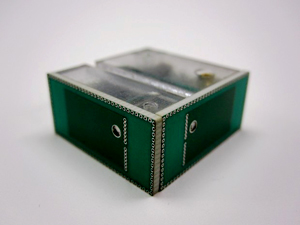
WISPER is a tiny, one-inch square disposable router that is waterproof and heat-resistant up to 500 degrees Farenheit. Each contains an integrated two-way digital radio, antenna, and 3-volt lithium cell. The devices were developed for the DHS by Hawaiian firm Oceanit Laboratories and the University of Virginia's Department of Computer Science.
When used in fires and other disasters, WISPER routers leave digital “breadcrumbs” that track firefighters' locations. Users are intended wear up to five routers simultaneously by carrying them in a belt-mounted waterproof dispenser. Firefighters who venture behind concrete or out of radio range then drop a router out of the dispenser as a location marker. Dropped routers then form nodes in a mesh network that will automatically reconfigure even if the breadcrumbs are moved or destroyed. According to an Oceanit representative, “if a WISPER note is damaged, the network reheals or repairs itself in real-time to maintain communication.”
The DHS sees use of the devices as an alternative to traditional two-way radios or walkie-talkies. WISPER is integrated with two devices already on the market. One, called the Physiological Health Assessment System for Emergency Responders (PHASER), is a combined body temperature, blood pressure, and pulse monitor. If the PHASER monitor indicates that a firefighter is in danger, their comrades can then be led to them by the breadcrumbs. The second device is a netbook-sized integrated microwave radio/battery/navigation device called the Geospatial Location Accountability and Navigation System for Emergency Responders (GLANSER). (As always, the Department of Homeland Security loves acronyms.)
WISPER uses a low-power, slow communications protocol called ZigBee with a maximum speed of 100 kbps/second. But, according to Jalal Mapar of the DHS, that is enough:
Throw in smoke, firehose mist, stairwells, and walls, and you’re down to maybe 10 kbps. But that’s fast enough to tell an incident commander the whereabouts (via GLANSER) and health (via PHASER) of every firefighter in the blaze […] We’re not streaming video that needs a lot of bandwidth, just vital signs and coordinates.
[youtube 6dIyuWOqGt8]
The new, disposable routers are designed to solve a big problem for emergency first responders: PHASER's and GLANSER's limited communication ranges. Both devices transmit at 900 Mhz--the same frequency as older cordless phones--and have trouble transmitting through walls in fires. Use of these new routers is intended to increase their communications range by a significant degree.
In tests conducted for the Federal Emergency Management Agency, WISPER networks were able to transmit coordinates and vital stats from the two devices to communication centers located up to 150 feet away. When actual fires take place, small USB-enabled base stations plugged into laptops in the fire truck will allow easy tracking of firefighters.
WISPER is not available commercially as of yet: The DHS says they are still seeking a private-sector partner to manufacture the routers in volume. Since we're talking about the government here, the routers will also face a lengthy bureaucratic approval process.
[Top image: Flickr user Lance Cheung]
[Middle image: Oceanit]
For more stories like this, follow @fastcompany on Twitter. Email Neal Ungerleider, the author of this article, here.


 Reverse Printer
Reverse Printer
by: Yanko Design, 2011-06-24 08:14:12 UTC
Generally we buy a printer to take printouts, but here is a concept that believes in the reverse process…removing ink from the printed-paper! Akin to the idea of a dermatologist laser-burning blemishes and dark spots from your skin, the Ink Remover Printer proposes to do something similar; zap out the ink using laser technology. This way you can reuse the old memos to print new ones, recycle paper and feel good about it.
Designer: Kim Su Yeon
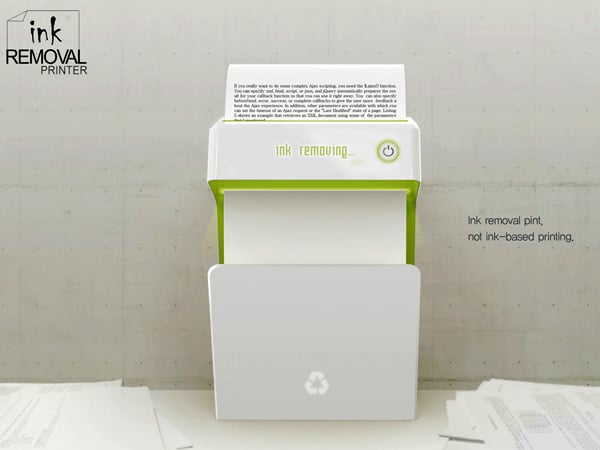
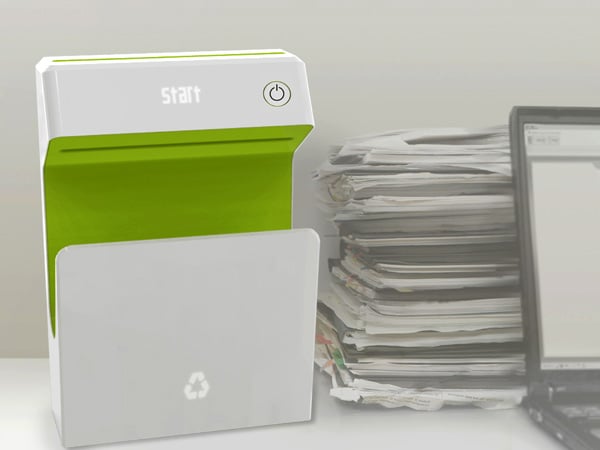
----------
Yanko Design
Timeless Designs - Explore wonderful concepts from around the world!
Yanko Design Store - We are about more than just concepts. See what's hot at the YD Store!
Minnesota researchers create alloy to convert heat directly into electricity
by: Ecofriend, 2011-06-25 07:06:55 UTC
Rajkumar Bhattacharya:

Alloy for generating electricityConverting Heat to Electricity
Green electricity is not easy to generate. It needs a mix of engineering, materials, science and more. But when one takes the pain, it works wonders. Just ask the researchers of University of Minnesota who worked as a team to go through those pain taking hours of study and research to discover a new multiferroic alloy for generating electricity sans CO2 emission. When this research comes to the ground, even moving cars would be generating enough green energy to keep them moving.
It is all about a new alloy, which converts heat into electricity. The newly discovered material traps that heat and generates electricity to charge the batteries of a hybrid car. So, call it a technology for future as the new-found material can be used in more than one intended way. Professor Richard James, who led the team of researchers, is positive about the multifaceted possibilities of this discovery, calls it an entirely new method of energy conversion.To say only that would be saying only a part of the whole story, as the new alloy helps banishing carbon dioxide totally from the process of electricity generation. This effort has been reported in the first issue of the new scientific journal: Advanced Energy Materials.
The new alloy is known by the chemical name of Ni45Co5Mn40Sn10. It behaves like a multiferroic element, which means that it has the ability to undergo a highly reversible phase transformation. In the various phases of transformation, one solid turns into another solid and the alloy’s magnetic properties are greatly changed. Scientists are now going to be able to use this property in various energy conversion devices. This has been demonstrated recently on a small scale in a University of Minnesota lab. Researchers showed that the new allow does not have any magnetic property. But, it develops magnetic property with an increase in temperature.
This makes the alloy produce electricity in a coil attached with it. definitely, researchers say, some of the heat energy is lost in the process that is called hysteresis. But, they have also found a way to minimize the effects of hysteresis. The research team, apart from Prof. James, consisted of other members like post-doctoral researchers Vijay Srivastava and Kanwal Bhatti, a Ph.D. student Yintao Song working with University of Minnesota in Chemical Engineering, along with Materials Science professor Christopher Leighton.
Via: Physorg


 New discovery might lead to laptops powered through typing
New discovery might lead to laptops powered through typing
by: Gizmag Emerging Technology Magazine, 2011-06-23 17:48:53 UTC

Everlasting batteries and self-powering portable electronics have come one step closer to reality, according to the results of a new research by Australian scientists from Royal Melbourne Institute of Technology (RMIT). The group of researchers successfully measured piezoelectric thin film’s capability to turn mechanical pressure into electricity. It may sound like an idea from the realm of science fiction, but the discovery could eventually lead to laptops powered through typing...
Continue Reading
New discovery might lead to laptops powered through typingTags: Battery,
Electricity,
Laptops,
Piezoelectric
Related Articles:


 ASK A TECH GEEK: Is It Better to Keep My Laptop in Sleep Mode or to Shut it Off?
ASK A TECH GEEK: Is It Better to Keep My Laptop in Sleep Mode or to Shut it Off?
by: Inhabitat , 2011-06-23 22:35:36 UTC

Each week renowned gadget expert Peter Rojas from gadget Q&A site GDGT.com answers your questions about green technology in our Ask A Tech Geek Series. Read on for this week’s installment and submit your questions below!
QUESTION: I’ve heard that it’s better to keep a laptop on sleep mode rather than shutting it off completely. Why is that the case? What would you recommend?
- submitted by WIll Giron
PETER ROJAS:
What you’re probably referring to is the concern that frequently shutting down and booting up causes stress to your computer’s hard drive that over time will culminate in catastrophic failure — and almost certainly at the worst possible moment, like when you’ve just finished a term paper.
Read on to learn the greenest state for your hard drive.



Read the rest of ASK A TECH GEEK: Is It Better to Keep My Laptop in Sleep Mode or to Shut it Off?
Permalink |
Add to
del.icio.us |
digg
Post tags: ask a gadget geek, ask a tech geek, clean technology, conserving laptop battery, eco design, eco geek, Eco Tech, engadget founder, gdgt founder, gdgt.com, gizmodo founder, green design, green gadgets, green gdts, green tech, green technology, Greener Gadgets, how to care for your laptop, inhabitat, inhabitat ask a tech geek, laptop power, peter rojas, powering your laptop, sleep mode vs shutting of laptop, sustainable design, Sustainable Gadgets, sustainable technology, tech geek
AIGA (Re)Design Awards 2011
by: FEED STOP, 2011-06-14 13:00:00 UTC
As a winner of the 2009 AIGA (Re)Design Awards, it's an honor to be asked to help judge the 2011 AIGA (Re)Design version. The competition is open to all designers (student and professional) ranging from the graphic designer to the landscape architect. It's a diverse competition that is segmented into two areas of submission:
Environmental Sustainability
Social Responsibility
Any work created between August 2009 until now is fair game for entry. As it is a more broad competition, any design work from branding to environmental design is sought.
See more in their promotional video (Vimeo).
Hope to see your work submitted! [...]
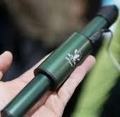




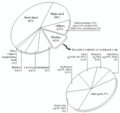




Comments by our Users
Be the first to write a comment for this item.